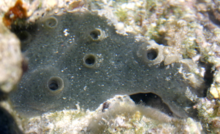
Spongia is a genus of marine sponges in the family Spongiidae, originally described by Carl Linnaeus in 1759, containing more than 60 species. Some species, including Spongia officinalis, are used as cleaning tools, but have mostly been replaced in that use by synthetic or plant material.

Cliona is a genus of demosponges in the family Clionaidae. It contains about eighty described species.

Clathria is a large genus of demosponges in the family Microcionidae.
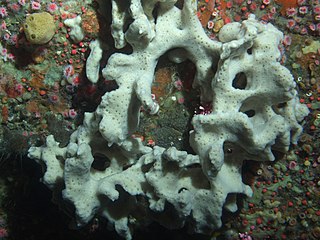
Ircinia is a genus of sea sponges in the family Irciniidae.

Amphimedon is a genus of sponges with over 60 described species. In 2009, Amphimedon queenslandica was the first species of sponge to have its genome sequenced.

Amphimedon compressa, the erect rope sponge, red tree sponge, red tubular sponge, or red sponge is a demosponge found in southern Florida, the Caribbean Sea, and the Bahamas. It can be deep red, orange, brown, or black.
Ptilocaulis is a genus of demosponges. The species within this genus are usually red or orange. They are often called tree sponges, as they grow many branches from a single stem resembling trees. They can grow to large size.

Haplosclerida is an order of demosponges. It contains the following families:
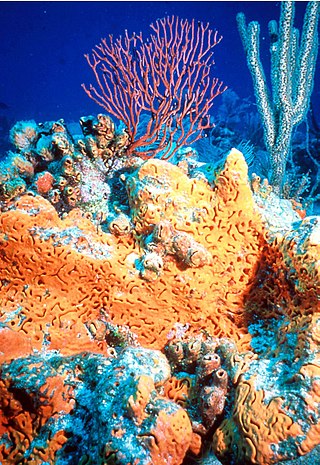
Agelas is a genus of sea sponge in the class Demospongiae.

Callyspongia is a genus of demosponges in the family Callyspongiidae.
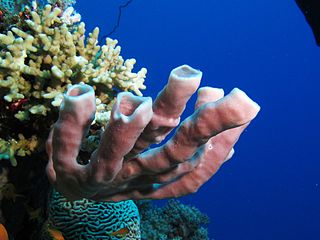
Callyspongiidae is a family of sea sponges in the order Haplosclerida. It contains the following genera and species:

Petrosiidae is a family of sponges, first described in 1980 by Rob van Soest which contains the following four genera:
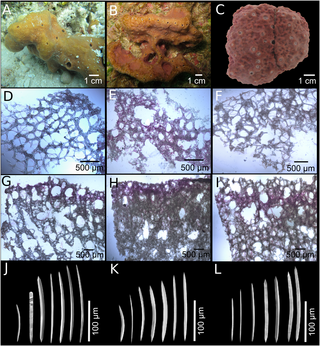
Neopetrosia proxima is a species of marine petrosiid sponge native to the tropical and subtropical waters of the western Atlantic Ocean.
Neopetrosia is a genus of marine petrosiid sponges. It was first established by the American spongiologist Max Walker de Laubenfels in 1932. It contains these 27 species:
Agelas dispar is a species of demosponge in the family Agelasidae. It lives on shallow-water reefs in the Caribbean Sea and around the West Indies.

Mycale is a genus of demosponge with 240 recognised species in 11 subgenera. It has been a large genus with multiple subdivisions since it was first described in 1867.

Dysidea is a genus of sponges belonging to the family Dysideidae.

Phorbas is a genus of demosponges belonging to the family Hymedesmiidae.

Spirastrella coccinea is a species of marine sponge in the family Spirastrellidae. It is found in the tropical western Atlantic Ocean, the Caribbean Sea, and the Gulf of Mexico.
